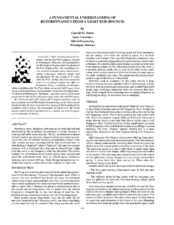| dc.contributor.other | Turbomachinery Symposium (21st : 1992) | |
| dc.creator | Stroh, Carroll G. | |
| dc.date.accessioned | 2017-10-05T14:13:19Z | |
| dc.date.available | 2017-10-05T14:13:19Z | |
| dc.date.issued | 1992 | |
| dc.identifier.uri | https://hdl.handle.net/1969.1/163536 | |
| dc.description | Lecture | en |
| dc.description | Pg. 161-166 | en |
| dc.description.abstract | Machinery users, designers, and analysts are both alarmed and fascinated by the occasional occurrences of contact between a rotating shaft and a stationary part. "Rubs," a common description for such contact, are typically categorized into two classes according to the level of interface pressure generated by contact. Very high contact pressure accompanied by high frictional force is classified as a "hard rub" while a "light rub" indicates low contact pressure with a frictional force that may be insignificant. Light rubs that result in half frequency whirl are discussed. The author explains the phenomena using simple spring mass systems and generally understood terms such as critical speed, unbalance response, and contact stiffness. Some design parameters are included that may be used to affect rotor response to light rubs. | en |
| dc.format.medium | Electronic | en |
| dc.format.mimetype | application/pdf | |
| dc.language.iso | en | |
| dc.publisher | Texas A&M University. Turbomachinery Laboratories | |
| dc.relation.ispartof | Proceedings of the 21st Turbomachinery Symposium | en |
| dc.subject.lcsh | Turbomachines | en |
| dc.title | A Fundamental Understanding Of Rotordynamics From A Light Rub (Bounce). | en |
| dc.title.alternative | Fundamental Understanding Of Rotordynamics From A Light Rub (Bounce) | en |
| dc.type.genre | Presentation | en |
| dc.type.material | Text | en |
| dc.identifier.doi | https://doi.org/10.21423/R1PW9V | |


